How to Deliver An Outstanding Omnichannel Customer Experience
Customer service has gone digital — and your contact center needs to evolve with the times. As younger customers make up more and more of the marketplace, they’re shifting service preferences toward digital channels.
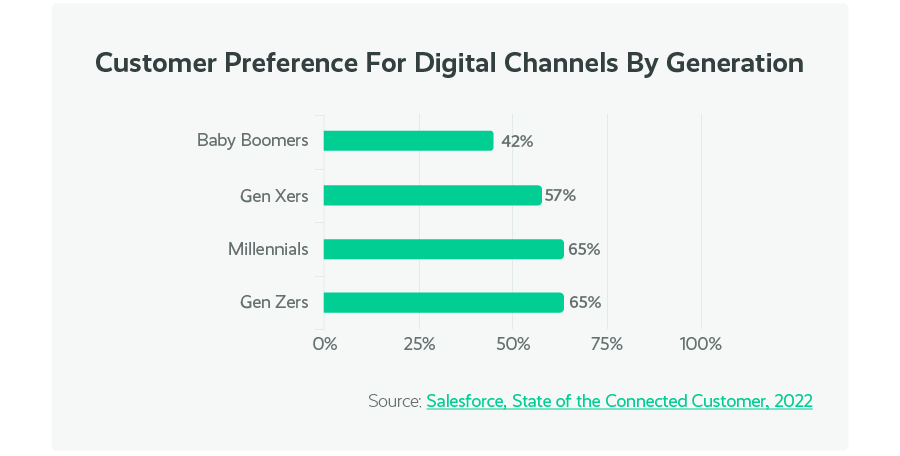
No matter where your customers get service, they’ll expect outstanding customer experience (CX), so you’ll have to be ready. Make sure your contact center is set up for digital success behind the scenes so that you can provide the experiences your customers demand.

What Is Omnichannel Customer Experience?
First, it’s important to understand the difference between multichannel and omnichannel customer service centers.
Both serve customers in multiple channels, but a multichannel environment doesn’t connect those channels — every interaction is siloed. An omnichannel customer support center connects customers’ interactions no matter where they take place. Zendesk reports that only one-third of contact centers are omnichannel, so there’s a real competitive advantage to offering your customers a more fluid experience.
Omnichannel Doesn’t Mean Every Channel
When you expand your service options to create an omnichannel customer experience, it might be tempting to add several new channels quickly. After all, you want to be where your customers are, right?
Sure, but adding too many channels too fast can cause problems. Gartner research revealed that the more channels you offer, the more contacts customers will make, increasing your costs to handle them.
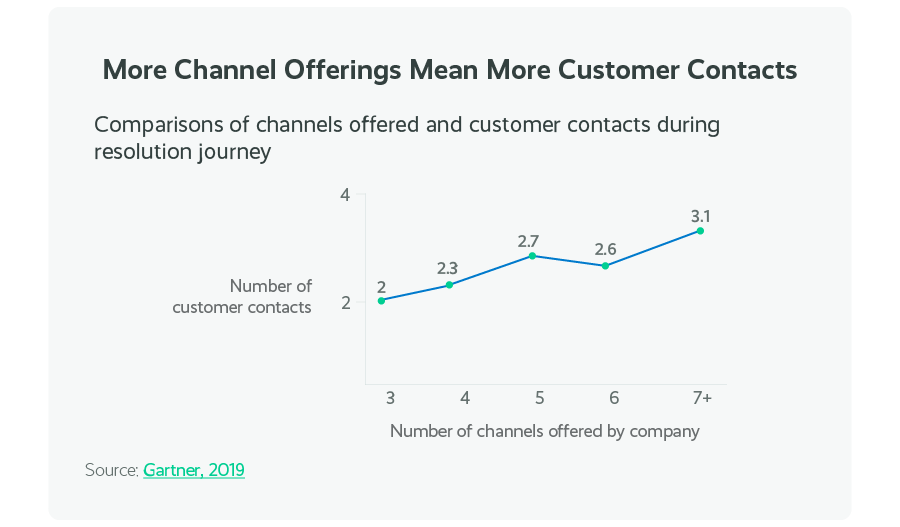
While customers do expect to be able to move across channels to complete their service journey, you need to make sure you’re ready to staff and monitor each channel properly to ensure costs don’t creep up.
For example, A 2022 study by ICMI showed that while 63% of contact centers offer customer service by email, only 41% were monitoring it for quality. Thirty percent (30%) offer social media customer care, but only 14% are checking on quality there.
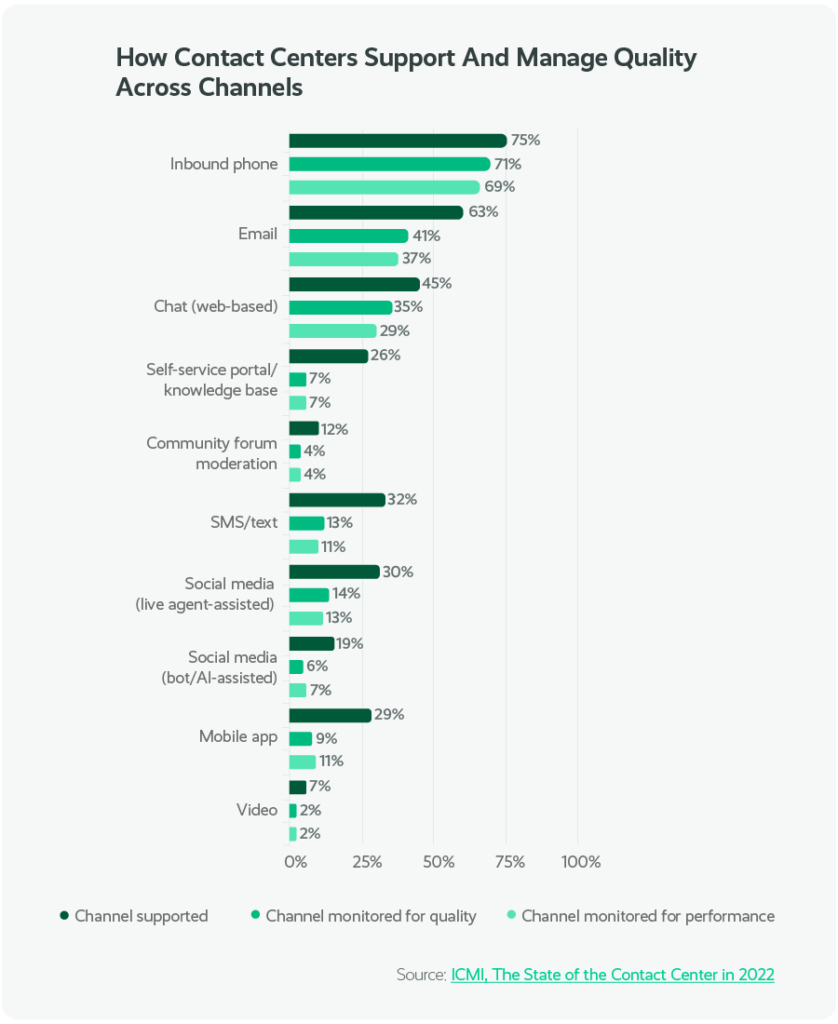
This inconsistency could lead to big trouble if you expand your omnichannel customer experience too quickly by adding several channels at once. Providing different channels as contact methods without monitoring for performance or quality means the customer experience could suffer in those channels without you even realizing it.
A better bet is to add the channels your customer base wants the most, train your agents to handle them right, and deliver the specific experience customers expect in those channels.
For example, you could add chat to your channel offering and then train your team on the differences in handling chats compared to email and voice. Then set up a way to conduct quality analysis on those interactions to ensure you are delivering on your committed customer expectations.
Contact center software driven by artificial intelligence (AI) can help by putting an end to spreadsheets and manual processes, easing the burden on your workforce management team.
Related Article: 5 Must-Haves for Growing Companies Looking to Create an Omnichannel Support Center

Evolving Roles In The Contact Center
In a digital customer service center, workforce managers, quality management analysts, and even CX leaders will find that their roles are changing — for the better.
Workforce Managers
In voice-only support centers of the past, workforce managers were always heads-down, constantly analyzing arrival patterns and maintaining meticulous spreadsheets. Capacity planning, forecasting, and scheduling were all based on averages and educated guesses. It might have worked well enough for voice on its own, but today’s omnichannel support centers require a new approach.
With digital workforce management, workforce managers can get out of spreadsheets and into higher-value work. They can allow AI to drive their processes and simplify their daily tasks, creating more time for strategy and building relationships with other teams.
Quality Management Analysts
Quality assurance used to mean hours of listening to customer service reps’ call recordings and checking off boxes if they met all the requirements of a call. It wasn’t very revealing of agents’ real performance — or of any customer service problems that might be brewing.
In a digital contact center, the simple compliance checks of quality assurance shift to quality management — true analysis of both objective and subjective behavior analysis of customer interactions across any channel.
With digital quality management, analysts can review omnichannel interactions with flexible scoring, gather feedback by question, and calibrate scoring to uncover customer service problems quickly. The faster you find issues, the faster you can resolve them — and see the difference in your customer satisfaction and retention.
Head of CX
With the addition of more channels, a CX leader’s job gets more complex. Managing an exceptional customer experience in every touchpoint is a big challenge, but it’s made easier when you know the right agents are in the right channels to serve your customers.
Customers have different demands for response times and communication styles in each channel, meaning you’ll need to staff each one with the right number of customer service representatives. You’ll also need to make sure agents’ skills and strengths match up with each channel’s communication style.
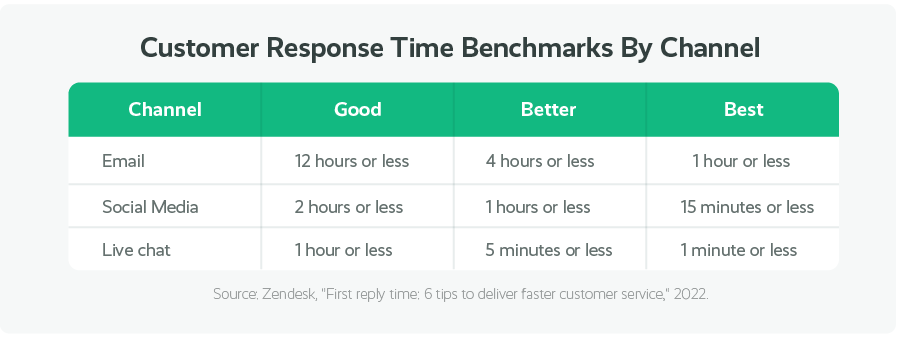
That means working closely with workforce managers and quality management analysts to ensure that agents are scheduled optimally to serve these channels the way customers want — and that agents are being evaluated on metrics that match up with those standards.
For example, if your customer service center is still using voice KPI standards to evaluate agents’ performance in chat, you’re probably misjudging it. KPIs for voice and digital are very different, so it’s important to make sure you’re using metrics that map to the right channels and objectives. For chat, you want to measure performance in areas like writing skills, empathy, and First Contact Resolution.
If your digital channels aren’t aligned with true digital KPIs, your forecast and schedule will be off. And that can lead to costly issues like overstaffing or missing service level agreements.
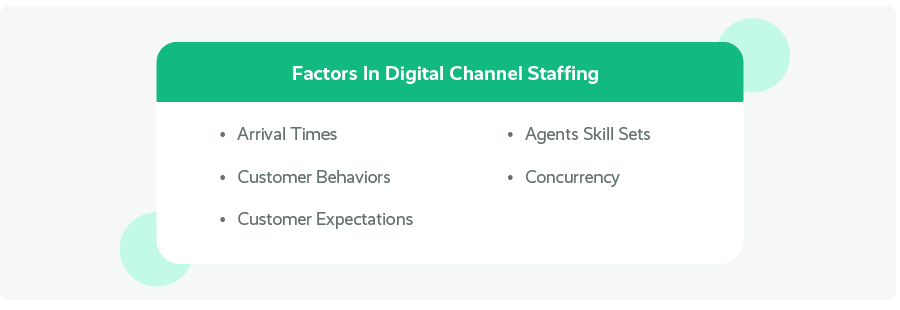
To accurately predict the staff with the right skills that are required for each digital channel, you need an AI-driven solution that helps you plan, adjust, and keep service levels — and your budget — on track.
Related Article: Can Your WFM Solution Accurately Forecast In A Modern Digital Contact Center?
Supplement Live Channels With Self-Service
Increasingly, customers show an interest in helping themselves with simple issues. According to Zendesk, 69% of customers say they’re willing to interact with a bot on basic issues, a 23% increase from the previous year. Offering self-service gives customers a chance to take care of their problems quickly and eases ticket volume for your team.
However, it’s important to remember that lower volume doesn’t mean less effort for your agents. The interactions that agents do handle will be the complex issues that require more advanced agents and likely involve multiple steps.
Self-service can be a win-win for agents and customers. Because they’re not repeatedly answering basic, often mundane, questions, agents will feel more engaged. And customers will be able to get easy answers whenever they need them, improving their satisfaction.
While a Gartner study estimated that 20% to 40% of today’s live service volume could be resolved in self-service channels, it also revealed that customers who have to switch to even one live channel after a failed self-service interaction end up costing support centers 80 to 100 times more.
When bots don’t provide the quick answers customers want, they can actually create a negative experience. According to Zendesk:
- 54% say it takes too many questions for the bot to recognize it can’t answer their issue
- 51% report not getting accurate answers
- 47% say it is most frustrating when they have to start all over with a human agent
If you do implement a chatbot to ease the strain on live channels, make sure they’re set up to handle common inquiries seamlessly and shift to a live agent quickly. If a customer hasn’t gotten the resolution they need from self-service, they’re bound to be a bit frustrated when they speak to an agent. Make sure your team is trained to smooth things over with empathy and understanding.
Related Article: What Customer Self-Service Is (And How To Implement It)

An Omnichannel Customer Experience Drives Loyalty And Sales
Today’s customer expectations can be high, but when you meet (and hopefully exceed) them, it pays off. You can garner customer loyalty with personalized experiences and excellent customer service in every channel you offer. That loyalty will show up in your bottom line and in KPIs like Customer Lifetime Value.
Consider the share of customers that will spend more with companies that make it easy to come back to them again and again by:
- Offering their preferred way to reach customer service. (93%)
- Personalizing the customer service they offer them. (90%)
- Not making them repeat information. (92%)
- Letting them find answers online without having to contact anyone. (89%)
A seamless experience is essential to your customer journey, and listening for customer feedback through sentiment analysis can let you know if you’re achieving that in every channel. The right solution will make sure you can look for customer sentiment on your social media channels, third-party review sites, surveys, and more.
Digital Channels Need Digital Help Behind The Scenes
When you add digital channels to your customer service offerings, you can’t treat them the same way you treat your voice channel. They’re more complex and call for an AI solution to ensure you get the biggest bang for your buck.
In uncertain times, getting capacity planning, forecasting, and scheduling right will help you deliver an outstanding omnichannel customer experience. You’ll build solid customer relationships and protect your bottom line at the same time.
Learn more about how digital channels are changing how contact centers operate in our new ebook, Is A Digital Contact Center The New Normal?.






